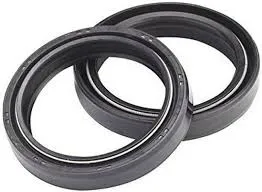10 月 . 11, 2024 22:57 Back to list
Optimal Performance of Lip Seal Gaskets for Enhanced Sealing Efficiency and Durability
The Importance of Lip Seal Gaskets in Modern Engineering
In the world of engineering and manufacturing, the role of seals and gaskets cannot be overstated. Among the various types of gaskets, lip seal gaskets stand out due to their unique design and functionality. These gaskets are essential components in many applications, including automotive, aerospace, and industrial machinery. Understanding their design, function, and advantages is crucial for engineers and manufacturers alike.
What is a Lip Seal Gasket?
A lip seal gasket, often simply referred to as a lip seal, consists of a flexible lip made from elastomeric materials, designed to fit snugly around rotating shafts or within stationary components. The primary purpose of a lip seal is to prevent the leakage of fluids or contaminants while allowing for minimal friction during operation. The lip itself acts as a barrier against external contaminants, ensuring that the internal environment remains clean and functional.
Design Characteristics
The design of lip seal gaskets varies depending on their application. Typically, they feature a circular cross-section, allowing them to adapt to the shape of shafts or housing. The lip is designed to create a dynamic seal by making contact with the shaft, while the body of the gasket provides a static seal against the housing. This design allows lip seals to accommodate a range of tolerances and surface finishes.
Lip seals also come in different configurations, including single lip, double lip, and even multilobe designs. Single lip seals are commonly used for simple applications, whereas double lip seals provide an extra layer of protection against dust and dirt, making them ideal for more demanding environments.
Applications
Lip seal gaskets are widely used in various sectors. In the automotive industry, they play a crucial role in preventing oil leaks in engines and transmission systems. Their effective sealing capabilities help maintain fluid integrity, ensuring optimal performance and safety.
In the aerospace sector, lip seals are employed to protect critical systems from contamination and pressure loss, contributing to the overall reliability of aircraft components. Similarly, in industrial machinery, they are used in pumps, compressors, and hydraulic systems to keep lubricants in and contaminants out, thereby extending the lifespan of the equipment.
lip seal gasket

Advantages of Lip Seal Gaskets
One of the primary advantages of lip seal gaskets is their ability to minimize friction between moving parts, which enhances the efficiency of mechanical systems. Their design allows for a tight seal with low drag, meaning that machinery can operate smoothly without excessive wear.
Moreover, lip seals are versatile in terms of material selection. They are available in various elastomers, including nitrile, fluorocarbon, and silicone, each offering different resistance properties to heat, oil, and chemicals. This flexibility ensures that engineers can choose the right material for specific applications, further enhancing performance and durability.
Another benefit is their ease of installation. Lip seals can be easily integrated into existing machinery without significant modifications, making them a cost-effective solution for manufacturers looking to upgrade or replace components. Their innovative design often results in lower maintenance costs over time, as they effectively minimize wear and the risk of leaks.
Challenges and Considerations
Despite their many advantages, lip seal gaskets are not without challenges. The effectiveness of a lip seal largely depends on its installation and alignment. Improper fitting can lead to premature wear or even seal failure, resulting in fluid leakage and contamination.
Temperature fluctuations and exposure to abrasive materials can also affect the lifespan of lip seals. Engineers must consider the operating environment when selecting materials and designs to ensure optimal performance. Additionally, regular maintenance and inspection are crucial to identify any wear or damage early, thus preventing costly downtimes.
Conclusion
In summary, lip seal gaskets are integral components in various engineering applications, providing effective sealing solutions that enhance the efficiency and reliability of mechanical systems. With their unique design, versatility, and advantages, they have established themselves as essential tools in modern engineering practice. As technology continues to evolve, the innovation surrounding lip seal gaskets is likely to contribute to even greater efficiencies and advancements in numerous industries. Understanding their importance and proper application is vital for engineers aiming to optimize performance and maintain the integrity of their systems.